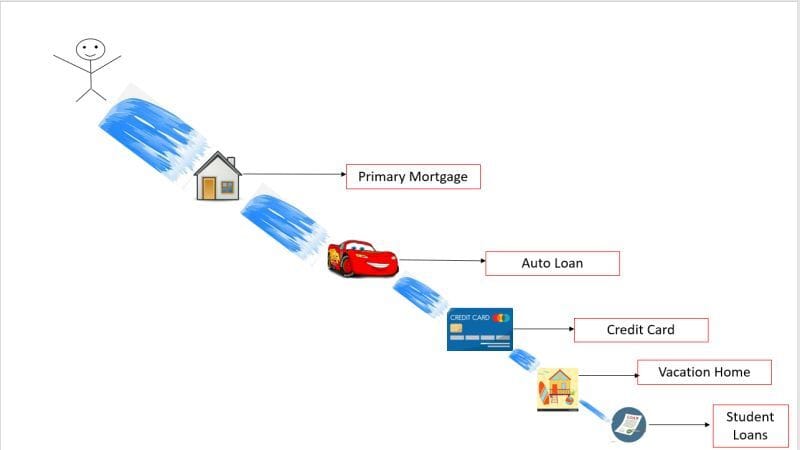Want access to an updated database of 200+ banks/consulting/buyside firms? Venmo @HoosHelpers $50 and shoot us an e-mail @[email protected]. Additional details of the database can be found below. Gain an edge over everyone else by not having to spend countless hours tracking applications and deadlines.
Due to popular demand, we added a bunch of Sophomore Summer Programs offered at banks like BofA, Rothschild, and UBS. Find them on the database!
Full disclosure: We do NOT recommend spending much time on Sophomore Summer Programs offered at large institutions. All that is needed for a sophomore summer internship is experience remotely related to finance at any firm of any size
Recruiting Timeline:
Banking:
Where We’re At:
SA 2025: No changes from last week’s update. Only RBC has opened its app. Word on the street is January/February will be big months for app openings
FT 2024: Another big week for FT recruiting. Larger, middle-market banks drove the bulk of app flow. Apps at SMBC, BNP, and Jefferies opened up. Quick ~1-month turnarounds on these apps, so be sure to be prepared for interviews
Newly released apps:
SMBC: Structured Finance analyst (FT opening)
Jefferies: Private Fund Group (FT opening)
Marriot & Co: Small boutique (not the hotel lmao) in Richmond, VA (FT opening)
BNP: Leveraged Finance (FT opening)
See below to gain access to our premium database, updated bi-weekly, which houses the application processes for over 200+ banks/consulting/buyside firms! Gain an edge over everyone else by not having to spend countless hours tracking applications and deadlines.

Consulting:
Where We’re At:
SA 2025: Only one firm has released an application. There shouldn’t be any others released for a few months. Start networking and do research!
SA 2024: It is getting very quiet. Larger, more prestigious firms have given out offers. Any applications from here on out will be small, niche firms
FT 2024: Firms are largely done with full-time hiring. There might be a few one-off applications released if a firm decides it needs an extra associate. But FT 2024 recruiting is wrapping up
Newly released apps:
Springhill Consulting Group - 2024 FT Analyst
LEK - Undergraduate Diversity Program (Virtual 2024)
Apply ASAP if you’re interested!

Buyside:
Where We’re At:
SA 2025: No changes here. Only GTCR (PE) and Insight Partners (VC) have released their apps
Released apps:
GTCR: Large, well-known PE (Summer 2025)
Insight Partners: Large VC, tech-focused (Summer 2025)
Blackstone: Women in Leadership Summit (Sophomores)

Premium Database:
The database is updated bi-weekly and contains 200+ Investment Banking and Consulting internships/full-time positions along with:
Interview tips for specific companies
Interview prep material
Applications and deadlines linked so that you can apply with one click
Information about the application process
Professionals to network with
Buyside deadlines, interview prep, and people to network with for the sweatiest of students
We send the updated dataset every two weeks with the latest banking and consulting job postings. We released our 21st update today.
Students we have been helping have already landed roles at Blackstone, Goldman, J.P. Morgan, Jefferies, Citi, and Solomon.
To get access to the database and the bi-weekly updates, you pay a one-time fee of $50 (Venmo @Hooshelpers) that grants you annual access to the updated database (You can enable purchase protection if concerned). If you don’t find our services helpful, we simply ask for feedback on an area we can improve upon and will refund your $50.
This is a small investment for a huge payout when you secure your dream offer!
Video of Premium Database——>HH Database Preview--Video
Market Update:
Higher for Longer
Unfortunately, we will be discussing rates once again.
General sentiment on the Street is that rates will be higher for longer. Quick reminder that the current federal funds rate is 5.25% - 5.50%. Rates were practically at 0% only a year and a half ago
The federal funds rate is the rate banks charge when lending to each other. Therefore, it effectively sets a benchmark for rates of all other financial products (mortgages, auto loans, term loans, revolving credit facilities, etc). So, if the federal funds rate rises, rates on everything else rises too.
Persistent inflation around 3.8% and strong employment have forced the FED to keep rates high.
Why are high rates bad?
High rates reduce liquidity and increase debt burdens which ultimately hurts economic growth.
Liquidity (access to cash) drops as rates rise because banks and other credit providers tighten lending standards. Lending standards are tightened because more expensive debt is more difficult for consumers and corporations to pay back. When there is less liquidity, there is less spending on goods, services, and projects. When there is less spending, there is less growth (refer to older posts to understand the importance of spending for our economy).
As you can see, rising rates cause a domino effect.

Let’s say we have a domino line with four blocks:
Block 1: Federal reserve hikes interest rates
-When this block is tipped, it takes a long ass time before it hits block 2. Sure, rates increase instantly on-paper, but everyone already secured access to financing back when rates were low. The economic performance of corporate and consumer balance sheets see very little change.
Block 2: Liquidity falls causing consumers and corporations to dig into their own savings to continue spending.
-When this block is tipped, it still takes a little while to hit block 3, but not nearly as long as block 1 took to hit block 2. Balance sheets contract as cash reserves are slowly chipped away as spending continues despite greater prices and lesser access to liquidity. Credit conditions (delinquencies, charge-offs, etc) begin to normalize to historical averages.
Block 3: Savings are eroded and debts rise amongst consumers and corporations. Spending begins to slow.
-When this block is tipped, it hits block 4 much quicker than the previous dominoes in the line. At this point, credit conditions start to creep above historical averages with delinquencies rising on “less important” debt products such as auto loans, credit cards, vacation home mortgages, junior bonds, unsecured loans, etc (Refer to the shitty illustration below for a consumer repayment waterall). Consumers and corporations begin to prioritize repayment of certain loans over others. Spending slows as people literally start running out of available cash. Spending on luxury, discretionary goods/services such as entertainment dries up.

Block 4: Bankruptcies and foreclosures are far above average levels. Major layoffs are common and consumers are funneling all available funds to cover non-discretionary expenses (food, shelter, etc). The FED starts cutting rates to spur economic growth.
-When this block is tipped, there is no other block to be hit. Discretionary spending has completely dried up, savings have been reduced to $0, and consumers/corporations are unable to repay their debts after fighting the effect of high rates for an extended period of time.
Right now, we are at block 2 quickly headed towards block 3. Consumer spending is still strong and corporations have been able to pass off rising, inflation-induced costs to consumers who are supported by a strong job market.
During an interview, be sure to explain the delayed effect that rising rates have on the economy and how economic cycles are accelerated as rising rates are absorbed by participants in the economy.
Learning Point of the Week:
Financial fraud. There are many forms of financial fraud. With everything from literally stealing money from people (Bernie Madoff) to insider trading.
This week, we are discussing the correlation between the rate of financial fraud and tightened credit conditions.
All money is equally green. And when credit conditions are loose with strong liquidity and a booming market, people/institutions tend to just throw money around. Sometimes, this money ends up in the hands of the wrong people.
This year alone, there have been some historic financial fraud cases.
SBF: Sam Bankman-Fried (previous Co-Founder and CEO of crypto exchange FTX) was recently sent to jail for misusing funds from depositors to fuel shitty investments for himself and FTX. Ultimately, depositors and investors lost a shit ton of money as people fled the crypto space once the FED started hiking rates
Anthony Viggiano: (previous banker at Goldman) was recently sent to jail for insider trading of Advent International’s acquisition of Maxar Technologies (fyi you can’t really trade any individual securities when working at a financial institution)
HIG sues Audax for manipulation of financials of Mobileum. HIG acquired Mobileum last year and discovered manipulation of their financials prior to their purchase from Audax
Those are just a few of the recent, most popular stories. My point is that financial fraud rises as rates are hiked and access to capital tightens. Many people/institutions rely on cheap borrowing to create returns. In essence, they have little operational skill and rely on levered beta to drive value. Levered beta gets crushed when rates rise.
It is important to note that when access to money is as cheap and easy as it was in 2020 and 2021, there are bound to be some bad actors who misuse capital and fuck everything up for everyone else.
Going Forward:
We will be slowly changing our name from “HoosHelpers” to “the Pulse.” Ownership has not changed and our services will remain the same. Do you like the change? Have suggestions for a different name? Let us know!
Please reach out to us with any questions about recruiting or if you’re interested in meeting the team! ([email protected])
We are happy to chat, review resumes, or help set up a coaching session
Check us out on LinkedIn too! The Pulse
Proudly Produced,
The Pulse
“The Pulse” #23
